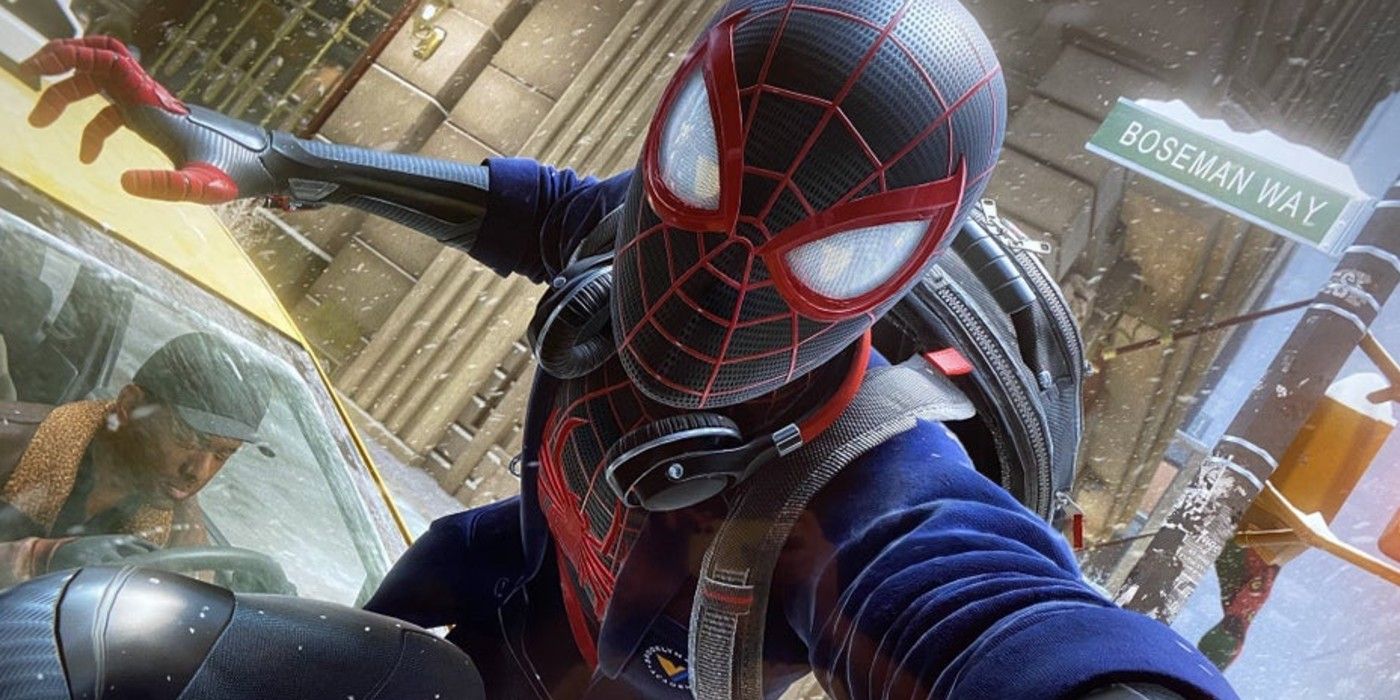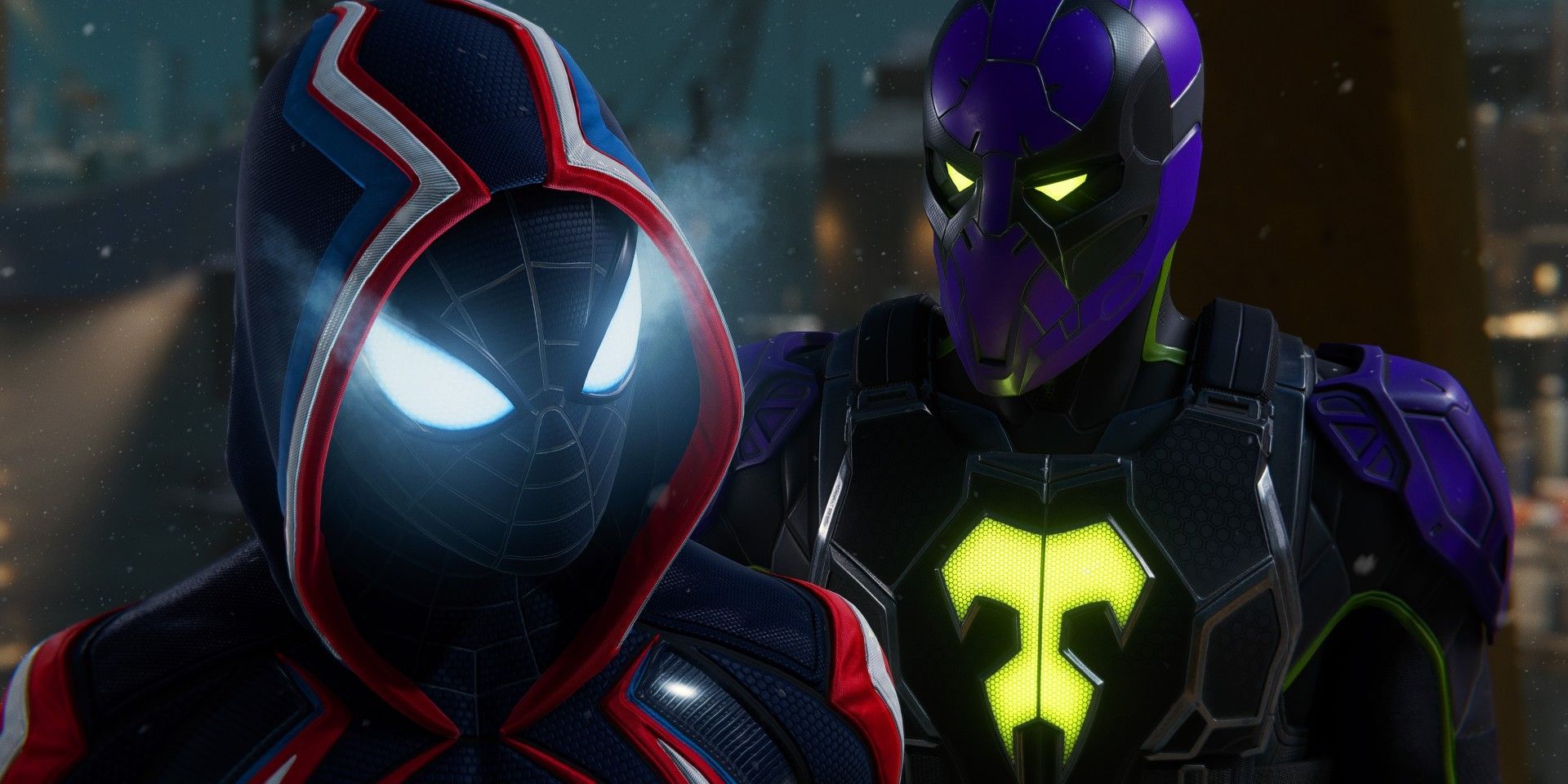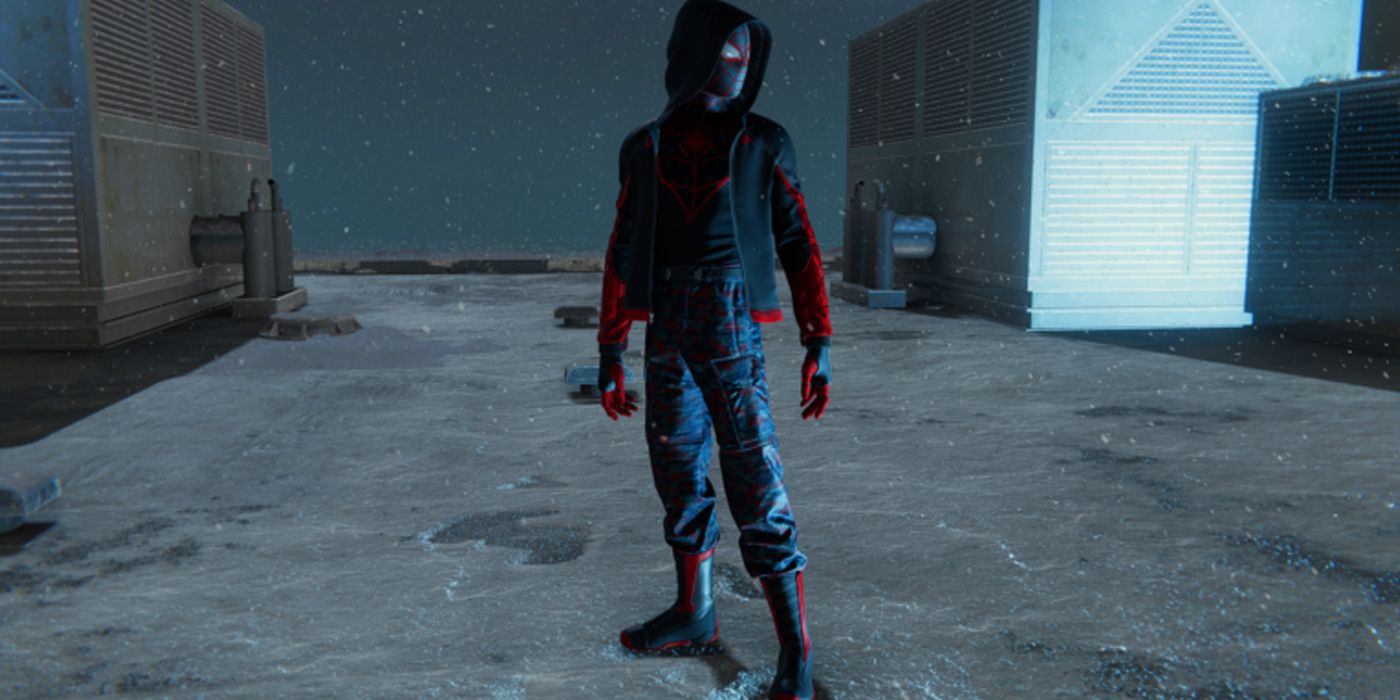PS5 launch title Spider-Man: Miles Morales allows players to choose between various costumes, a feature continued from the previous Spider-Man game. The outfits that Peter Parker wears in the original game reflect ones he wore throughout his much-longer career, including such notorious costumes as the Iron Spider outfit. But Miles is a newer character with less history and, therefore, fewer costumes to choose from.
While plenty of video games let players change their outfits, this is not just a meaningless feature. It has strong narrative elements that use subtext to address parts of Miles's identity.
Created by writer Brian Michael Bendis and artist Sara Pichelli, Miles first appeared in Ultimate Fallout #4. After the Ultimate Universe's Peter Parker was killed, Miles--a boy who had been bitten by one of the same lab-engineered spiders that gave Peter his powers--replaced Peter as the next Spider-Man. Since his debut, Miles has moved from the Ultimate Universe and been incorporated into the main Marvel Universe where he and Peter both use the title of Spider-Man -- something which has been incorporated into the game.
The costumes are also a nod to aspects of the comics introduced by writer Saladin Ahmed and artist Javier Garron in their work on the Miles Morales: Spider-Man series. As a biracial character, Miles's Black and LatinX identity give him different lived experiences than someone like Peter Parker, and one way this is expressed in the comic is in his personal sense of style.
Garron's art does a wonderful job using fashion as a way for characters to demonstrate personal expression. But Miles's fashion choices also come up in dialogue, such as when he appreciably tells well-dressed villains that their suits are fly in issue #5. In the game, this use of fashion as a cultural signifier translates into some of his costume designs, such as "The End Suit," which includes a hoodie and camouflage cargo pants (based on Damion Scott's art in Miles Morales: The End).
A number of Miles's costumes have hoodies worked into them, including the 2099 Suit, the Bodega Cat Suit and the Spider-Training Suit (which also features jeans, kicks and a T-shirt that Peter let him borrow). Beyond being fashionable, hoodies have come to symbolize the struggles faced by young BIPOC and LatinX men in the US, as demonstrated in the killing of Trayvon Martin and the Million Hoodie March. It is worth noting that roughly one-third of the Spider-Suits in the game include a hood.
Of course, the most recognizable suit (besides the Classic) is Miles's Into The Spider-Verse Suit, based on the 2018 film, which depicted Miles swinging through New York in Air Jordans in a similar bit of symbolic costuming (something the game has controversially altered).
Spider-Man: Miles Morales does an excellent job showcasing Miles's character in many different ways, both subtle and overt. The design of his different Spider-Suits is a great example of this.



